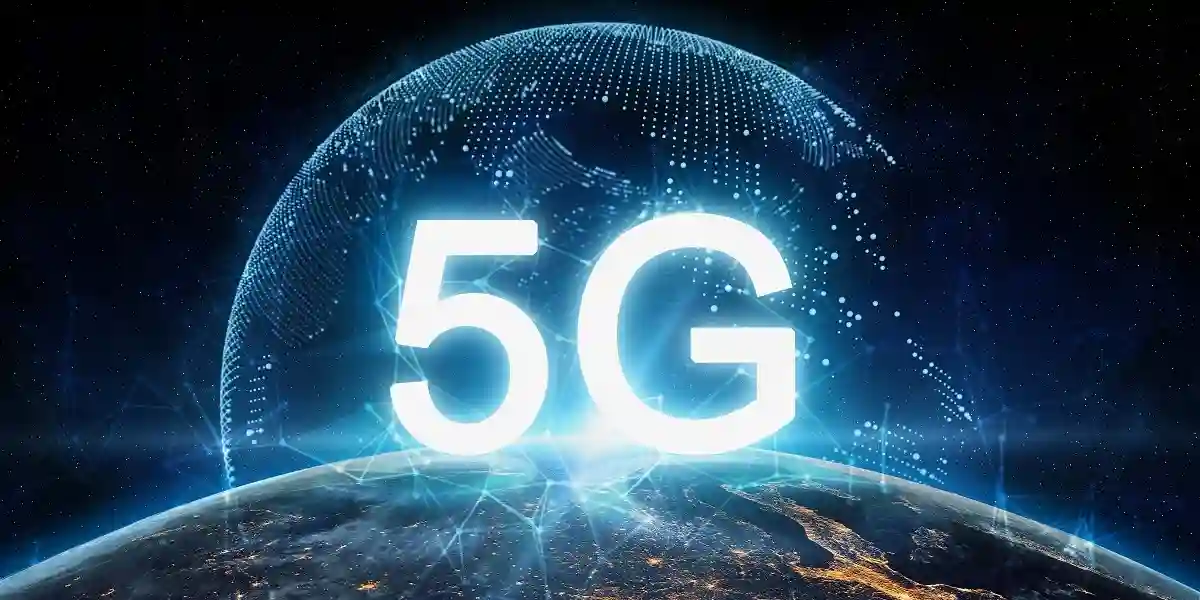
Mar 21, 2023
Blog Digital World The Benefits and Risks of the 5G Revolution
The 5G revolution is well underway. Countries around the world are racing to deploy next-generation wireless networks that promise faster speeds, lower latency, and greater data capacity than ever before. As a result, the market for 5G technologies will encounter extraordinary growth in the coming years, as demand for high-speed mobile internet increases and new applications for 5G technology emerge.
According to a recent report by BCC Research, the global market for 5G technology should reach $228.6 billion by 2026, growing at a compound annual growth rate (CAGR) of 64.9% during the forecast period of 2021 to 2026. This eye-watering expansion is being driven by a number of factors. These range from the increasing demand for high-speed mobile internet, the proliferation of connected devices, and the development of new applications for 5G technology in areas such as the IoT, autonomous vehicles, smart cities, and industrial automation. But for the technology to be successfully implemented, some questions of security must be ironed out.
5G technology will have countless applications, but a significant area it will serve is the ever-expanding Internet of Things. Emerging applications and business models, combined with lowering device costs, have resulted in a sharp increase in the number of connected devices in recent years. The number of IoT devices with cellular connections is expected to grow from 1.9 billion in 2021 to 5.5 billion by 2027, according to the Ericsson Mobility Report.
So far, 3G and 4G has been a spanner in the works of the IoT revolution. 3G and 4G are admittedly limited in the number of connections they can support, the amount of data they can transmit, and most importantly, the speed they can offer. 5G promises to overcome these hurdles and help bolster the continued expansion of the IoT.
Not only does 5G boast superfast bandwidth, but it also has ultra-low latency in data communications and can support machine-type communications (MMTC). Unsurprisingly, manufacturers are drawn to the numerous gains – including shorter machine downtime, predictive maintenance, higher product quality, and more informed decision-making – that are part and parcel of IoT technology.
Industry 4.0 and smart cities are other projects made possible by 5G. By 2050, there will be around thirty smart cities across the world, with half of these based in North America and Europe. To support these projects, global investments would need to reach $1.8 trillion between 2010-2030 collectively. Unsurprisingly, these projects are creating ample opportunities for 5G technology.
When it comes to manufacturing, wireless technologies have previously played a limited role due to sound, vibration, and heat. 5G is expected to eliminate these issues, opening up a range of new possibilities for manufacturers and other end-users.
BCC Research’s recent report acts as an ideal guide for hardware suppliers, players offering software solutions and services, as well as the end users who will eventually use the technology. With regional market data and in-depth analysis of the market and technology background, those with investments in the 5G industry can become equipped to navigate the sector’s explosive growth.
IoT and machine-to-machine connections within manufacturing are rising. As a result, competitiveness in the manufacturing sector is surging, as companies flex their improved efficiency and profitability. 5G connectivity is allowing manufacturing companies to explore the possibilities of robot automation, automated guided vehicles, and cutting cables. More and more smart factories are in the works thanks to 5G, creating new revenue streams for 5G operators.
In the industrial sector, 5G technology could be used to enable greater automation and efficiency, for example by allowing machines to communicate with each other and with central control systems in real time. This could have significant implications for industries such as manufacturing, logistics, and agriculture.
Swifter and more efficient data broadcast will also endorse precision farming, allowing farmers to boost crop yields. Factory automation is one of the significant sectors to utilize 5G for improving operations and enhancing productivity to meet the needs of the growing population and industries.
Among all the benefits of 5G architecture, some pressing security concerns remain. 5G will connect every aspect of society, making them far more expansive than traditional mobile connections. They have more endpoints and network elements, offering more opportunities for attack. Security must become the number one priority for network providers, with device authentication and data encryption extended to cover this larger area. Otherwise, the ultimate success of 5G deployment could be compromised.
But with various manufacturers and vendors dancing to the beats of their own drums, the standardization of security protocols across the industry has yet to happen. Industry inconsistencies regarding security can lead to kinks in the overall armor of 5G networks, creating more vulnerabilities for attackers to exploit.
Another problem lies in 5G’s reliance on cloud computing. If a singular cloud provider is compromised, it follows that the entire network of connected devices could become exposed. The careful vetting of cloud providers must take place to ensure they have robust security measures in place. Without this, vast amounts of data could be at risk.
Finally, there are concerns around the use of artificial intelligence and machine learning in securing 5G networks. While these technologies can be incredibly useful for detecting and preventing attacks, they also have the potential to be used maliciously. It's important to carefully monitor and regulate the use of AI and machine learning in security applications to ensure that they are being used ethically and responsibly.
All wireless technologies, of course, carry some risk. And as technologies such as 5G make gains in complexity and efficiency, they also generate more vulnerabilities. With the implementation of security protocols, industry standardization, and monitoring of emerging technologies, we can help ensure the safety and security of 5G networks in the future.
The potential benefits of 5G are enormous, and with the right investments and policies, it has the potential to transform industries and enable new use cases that were previously unimaginable. As such, it will be important for stakeholders to work together to ensure that 5G technology is deployed in a secure and responsible manner, in order to fully realize its potential and maximize its benefits for society as a whole.
We publish a high volume of reports on information technology. Membership with us can provide you with access to the full scope of reports within your chosen category. Get in touch to discuss this option with a friendly member of our team.

Olivia Lowden is a Junior Copywriter at BCC Research, writing content on everything from sustainability to fintech. Before beginning at BCC Research, she received a First-Class Master’s Degree in Creative Writing from the University of East Anglia.

From smartphones to satellites, antennas play a vital role in enabling the seaml...

Introduction Artificial Intelligence (AI) and the Internet of Things (IoT) are r...

We are your trusted research partner, providing actionable insights and custom consulting across life sciences, advanced materials, and technology. Allow BCC Research to nurture your smartest business decisions today, tomorrow, and beyond.
Contact UsBCC Research provides objective, unbiased measurement and assessment of market opportunities with detailed market research reports. Our experienced industry analysts assess growth opportunities, market sizing, technologies, applications, supply chains and companies with the singular goal of helping you make informed business decisions, free of noise and hype.